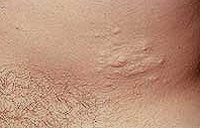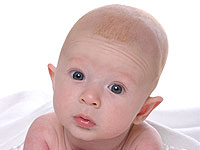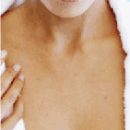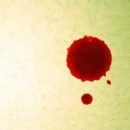What are the reasons for the development of neurofibromatosis? How to recognize this ailment? Answers to these questions are contained in this article.
Content
Causes of neurofibromatosis development
Neurofibromatosis - a group of hereditary diseases with characteristic changes on the skin, in the nervous system, often in combination with anomalies in other organs and systems.
Currently, 6 types of neurofibromatosis are distinguished, of which neurofibromatosis of type I (Relinganausen disease) is distinguished.
The disease is due to mutation of one of the genes - «NF1».
The disease is due to mutation of one of the genes - «NF1».
Modern science assumes that the gene «NF1» belongs to genes that suppress the development of tumors. Reducing or absence of neurofibromine protein, the production of which is controlled by the mutation of the gene «NF1», leads to reincarnation of cells.
The clinical diagnosis of type I neurofibromatosis is based on the detection of diagnostic criteria recommended by the International Committee of Neurofibromatosis Experts.
So, we list the diagnostic criteria (for the formulation of the diagnosis it is necessary to have at least 2 criteria):
-
 6 or more spots on color skin «coffee with milk», each in diameter more than 5 mm in a child and more than 15 mm in an adult;
6 or more spots on color skin «coffee with milk», each in diameter more than 5 mm in a child and more than 15 mm in an adult;
- 2 and more neurofibromes (benign tumors of peripher nerve) or 1 plexiform neurofibrome;
- reinforced coloring in the axillary and inguinal regions;
- Glyoma (tumor) of the optic nerve;
- 2 and more nodules are lichen - painted Gamarters of the iris;
- expressed bone anomalies, for example, in the form of dysplasia of the main bone;
- Nearest relative with diagnosed neurofibromatosis of type I (mother, father, brother, sister, baby).
In patients with neurofibromatosis of type I, there are an increased risk of malignant tumors: neuroblastomes, ganglioglyoma, sarcoma, leukemia, Wilms tumors.
From birth or first years of life there can be only some signs of type I neurofibromatosis, such as large pigment spots, plexiform neurofibromes, skeletal dysplasia. Other symptoms can manifest much later (by 5-15 years). At the same time, the degree of severity of clinical manifestations, the flow and speed of the progression of neurofibromatosis I type in different patients of unequal and fluctuate widely. Currently not established than such differences are due.
Neurofibromes are the most pronounced manifestation of Reflinghausen's disease, their number sometimes reaches several thousand; Some neurofibromes can be gigantic, weighing more than 10 kg. These cosmetic defects are usually most disturbed by patients even having systemic diseases. In addition, neurofibromes are associated with an increased risk of illustrative (in 20% of cases, according to our data).
When localizing in the abdominal cavity, they lead to violation of the functions of adjacent organs.
From time to time the number and size of neurofibrom in response to various incentives, among which the leading place is occupied by the hormonal restructuring of the body: adolescent age, period of pregnancy, or after childbirth, as well as suffered injuries or severe diseases. Very often, surgical interventions, some cosmetic procedures, physiotherapy procedures (for example, massage, warming) contribute to neurofibroid. But often the disease progresses and on the background of apparent well-being.









